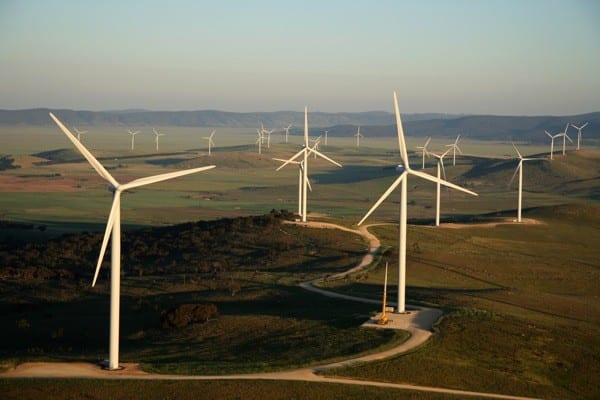Investment in renewable energy projects in Australia has become more appealing since the establishment of the federal government’s $10 billion Clean Energy Finance Corporation, according to the latest edition of Ernst & Young’s Renewable Energy Country Attractiveness Index.
The index, released this week, ranks Australia’s ‘attractiveness’ in the global renewables investment market – a market it says is expected to be worth $US630 billion a year by 2030 – in fourth place, below the US, China and Germany (in first, second and third positions, respectively) and ahead of the UK, Japan, Canada, India, France and Belgium.
The report accompanying the index says that high levels of project activity and investment interest in Australia, as well as Japan, are giving the Asia Pacific region a strong market presence, and points to the CEFC – the investment vehicle established as part of the federal government’s carbon pricing package, with $10 billion to allocate over a five year period to renewable energy, energy efficiency and low emissions projects – as a key driver of this trend.
“Australia is attracting admiring glances from investors eager for a slice of its new $10 billion Clean Energy Finance Corp, which will start issuing loans in July 2013,” the report says.
Indeed, as CEFC CEO Oliver Yates told RenewEconomy this week, the agency has already attracted interest from more than 150 projects with a total capital cost of more than $10.5 billion in its first two months of operation.
Yates said the CEFC – which officially “opened its doors” in early April after absorbing Low Carbon Australia and expanding its team – was involved in “active discussions” with more than 50 project proponents who were seeking CEFC funding of around $2 billion, and which had total project costs of more than $4.5 billion.
But not everyone is enthusiastic about the CEFC’s potential to drive Australian renewables investment. The federal opposition has described the fund as a “a honeypot to every white-shoe salesman imaginable” and have threaten to scrap it if elected in September, and scrap any contracts it has written too.
In his email interview with RenewEconomy, Yates questions whether these threats will be carried out, noting that a lot of the political opposition to the CEFC has been based on “preconceptions” about why and how it will operate that no longer apply.
“Now we are operational and the board has established our commercial approach, those early estimates which were the basis of their concerns are no longer valid,” he said. “The CEFC’s approach is to invest commercially and achieve self-sufficiency. This means that our impact on the Budget and specifically the Underlying Cash Balance is limited.”
As for dishonoring contracts, anyone can try to do this, Yates says, but whether it will be effective is a question of law.
“I don’t think it is productive to be discussing that because it is not a concept that any government would usually think of adopting. Imagine a world where every infrastructure project in the country will need to consider an environment that contracts could be ripped up by incoming governments that don’t like the project. It is not a world we want in Australia.”
The whole concept of the CEFC, Yates says, was “to provide stability and independent market-based decision making for financing development of the clean energy sector.” And to some extent this seems to be working.
As the Ernst & Young report notes, the “gray cloud” created by Australia’s carbon policy uncertainty “is not dampening the spirits of investors… who, on the contrary, are showing an ever-increasing appetite for wind and solar projects down under.
“The retreat of European lenders amid the worsening economic climate has opened the door for new investors to meet the estimated $US24 billion project financing requirement to fulfill the country’s 2020 RET, and it seems Chinese investors in particular are keen to take on the challenge.”
The report also points to the Australian Climate Authority’s recent recommendation to leave Australia’s renewable energy target unchanged, and analysis suggesting grid parity has been achieved for new wind projects, as other contributing factors boosting Australia’s renewables attractiveness.
“The latest analysis by Bloomberg New Energy Finance (BNEF) indicates that new wind power projects in Australia are as much as 18% and 14% cheaper than new gas and oil plants respectively,” it says.
But, as the unfolding King Island saga is illustrating, the Australian wind industry faces its share of uncertainty, too.
“New project announcements have declined year on year since peaking in 2009, in part due to new and cumbersome regulations for wind farms being proposed in New South Wales in particular,” the report notes.
“Planning policies in Victoria, for example, imposed a 2km distance between wind turbines and residences, while in March, the District Council of Yorke Peninsula rejected a development application from Australian renewable energy developer REpower to develop the $US1.3 billion Ceres project.”










